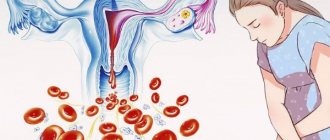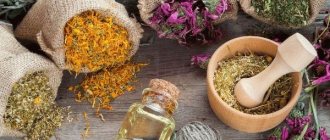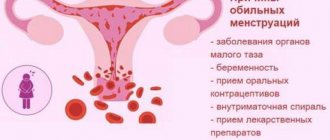Effective alternative treatment for uterine bleeding
In folk medicine, hemostatic herbs are used for uterine bleeding. Of these, the best remedy for uterine bleeding is popularly considered to be tincture of orange peels. Here is this folk recipe for bleeding with oranges:
Take 7 oranges with peels. Boil them in 2 liters of water until the liquid has evaporated by a third. Add sugar to taste and take 150 ml for treatment 3-4 times a day.
Here is another interpretation of this folk recipe. A decoction of unripe oranges along with the peel is an excellent treatment for uterine bleeding:
To prepare it, you need to boil the peeled peels of 6-7 oranges in 0.5 liters of water. Boil until 0.5 liters of broth remains. Add sugar or honey to taste. Take 4 teaspoons 3 times a day.
Hemostatic herbs
Since bleeding often serves as a signal of an incipient disease or a consequence of a dangerous pathology, it is necessary to urgently look for the cause that gave rise to it. However, in this case it is impossible to wait for the moment when medications will give the desired effect. Together with the blood, life literally leaves the body.
In this case, medicinal herbs are indispensable helpers. They not only stop bleeding, but also support a weakening person with vitamins and microelements. Most of these plants have anti-inflammatory, analgesic and bactericidal effects, suppressing the factors that cause the body to malfunction.
There are many herbs in nature whose biological formula includes vitamin K. Without it, the body cannot produce prothrombin, a substance that clots the blood. Tannins, in particular tannin, also play an important role in the fight against blood loss. Medicinal plants with a high content of this compound are included in antihemorrhagic (hemostatic) preparations.
Now let's see what herbs and in what cases should be used to successfully combat blood loss.
So, the most effective herbs to stop bleeding:
Bergenia root
Extremely rich in tannins. The tannin content in it reaches 9%. Used for douching during heavy menstruation, as well as bleeding caused by inflammatory processes in the uterus and appendages (fibroids, endometritis, salpingitis).
In addition, a decoction of bergenia root stops bleeding gums observed with stomatitis and periodontal disease. Arbutin contained in the plant has a powerful antimicrobial effect and relieves inflammation well.
Burnet
The medicinal specialization of this plant is clear from its name. Burnet is an effective remedy for blood loss of various natures. It stops hemoptysis in tuberculosis, heals wounds and is used for heavy menstruation.
Used to stop hemorrhoidal, intestinal, uterine and nasal bleeding. In addition to the vasoconstrictor effect, taking burnet preparations has an anti-inflammatory effect. For hemorrhoids, its decoction is not only drunk, but also used for baths and enemas.
The healing effect lies in the plant’s ability to clot blood. Nettle leaf is a traditional remedy for uterine, pulmonary, nasal, hemorrhoidal, kidney and intestinal bleeding. It is used as an adjuvant to combat such common female infectious diseases as vaginitis and colpitis.
Nettle is good at stopping blood loss caused by superficial injuries and wounds. The high concentration of organic iron makes the plant a valuable remedy for replenishing hemoglobin deficiency. The peculiarity of the plant is that to achieve a hemostatic effect, you need to take a large dose of a strong infusion of nettle. In small doses, nettle, on the contrary, helps thin the blood.
mistletoe
It has many useful qualities. It not only stops bleeding, but also normalizes blood pressure, relieves pain, inflammation and heals wounds. Alcohol tincture of mistletoe is used for gastrointestinal, uterine and nasal bleeding.
In case of exacerbation of hemorrhoids, accompanied by bleeding, an aqueous infusion of the plant is used to prepare baths.
Chokeberry
Its fruits are a living medicine containing tannins, many vitamins and microelements, including such rare ones as boron and molybdenum. Chokeberry has a versatile healing effect on the body.
A decoction of its berries stops blood loss and activates the hematopoietic functions of the body. It relieves spasms, increases appetite, dilates blood vessels, and has a choleretic and diuretic effect.
Highlander
Traditional component of antihemorrhagic preparations. Increases blood clotting and viscosity, blocking its loss by the body.
Preparations based on knotweed are used to stop uterine and hemorrhoidal bleeding. External use of the infusion eliminates bleeding gums and wounds. Shepherd's Purse
Effective for uterine and pulmonary bleeding, as well as for superficial wounds and injuries. In addition to the hemostatic and astringent effect, it relieves inflammation, heals wounds, dilates blood vessels and cleanses the blood.
Used for heavy menstruation accompanied by severe pain. If the cause of bleeding is an inflammatory process in the genital area, then using horsetail is not recommended.
Gives a good effect in the treatment of poorly healing wounds and hemorrhoids. It has a beneficial effect on blood quality, cleansing it of toxins. It has an antimicrobial and tonic effect, strengthening the body, weakened by blood loss.
This herb plays an important supporting role and is part of antihemorrhagic preparations. Midge stimulates hematopoietic processes, takes care of liver health, reduces capillary fragility and has a tonic effect.
Yarrow
One of the most effective hemostatic herbs. The history of its use goes back more than one millennium. Ancient warriors took yarrow powder into battle because they did not know the best remedy for wounds.
Quickly stops different types of bleeding: intestinal, hemorrhoidal, uterine, pulmonary, nasal and external. The only type of blood loss that yarrow cannot cope with is arterial. It is especially valuable that the plant blocks hemorrhages without forming blood clots. Therefore, it can be used for thrombophlebitis, stroke and heart attack, when other hemostatic drugs are prohibited.
Common cuff
An infusion of the cuff herb is effective for pulmonary and uterine bleeding, for excessively heavy menstruation, as well as for bleeding of internal organs, especially for peptic ulcers of the stomach and duodenum, inflammation of the small and large intestines, accompanied by indigestion, sluggish intestinal motility, and diarrhea. For hemorrhoids, the infusion is used internally and externally in the form of baths and microenemas. Externally, an infusion of herbs and crushed leaves of the cuff are also used for long-term non-healing wounds and ulcers, boils, inflammatory processes of the skin, bruises and bruises.
Lungwort officinalis
An infusion of the herb is used for pulmonary, intestinal, hemorrhoidal bleeding, as well as for bloody urine caused by the presence of stones in the kidneys and bladder. Due to the high manganese content, lungwort infusions have an excellent antiseptic effect, therefore, in case of infectious diseases of the lungs and genitourinary system, not only a hemostatic, but also an anti-inflammatory effect is achieved.
Kuril tea (sprigs of Potentilla fruticosa)
It is used for women's diseases as an anti-inflammatory and hemostatic agent. For uterine bleeding and heavy menstruation, drink a decoction of Kuril tea, and for leucorrhoea, colpitis and cervical erosion, they can douche. The flavonoids of Kuril tea, together with vitamin C, perfectly strengthen blood vessels and neutralize the destructive effects of toxins on them.
Herbs to stop uterine bleeding
Many of these medicinal plants can be purchased at the pharmacy. But people believe that in order to treat their illnesses, a person must collect them with his own hands. For uterine bleeding, folk experience recommends the following remedies.
- Pour 1 tablespoon of crushed viburnum bark with 1 cup of boiling water. Heat over low heat for 10 minutes and strain. Take 2 tablespoons of the product 3-4 times a day.
- Pour a pinch of white sweet clover herb into 1 cup of boiling water and leave for 30 minutes. Drink 0.3 glasses 3 times a day 30 minutes before meals.
- For uterine bleeding, pour 1 glass of Siberian cedar shells with 1 liter of water. Boil for three hours over low heat or in a water bath. Cool, strain, add boiled water to the original volume. Take the decoction three times a day, 1/2 cup.
- Pour 1 tablespoon of St. John's wort herb with 1 glass of boiling water. Cook for 5 minutes, leave for 15 minutes and strain. Drink 0.3 glasses 3 times a day.
- Brew 10 grams of shepherd's purse herb as tea with 1 cup of boiling water. Take 1 tablespoon 3 times a day. For uterine atony and uterine bleeding.
cat's paw
All parts of the plant (stems, leaves, flowers) contain substances beneficial to the human body. These are saponins, resins, tannins, essential oils, vitamins, flavonoids, etc. They activate blood clotting, thereby achieving a hemostatic effect.
In terms of its effectiveness, cat's paw is not inferior even to some pharmaceutical drugs, such as: Adrenaline and calcium chloride. Superior to other medicinal herbs (sandy immortelle).
It is not advisable to use a cat's paw for women who have a tendency to form blood clots, suffer from varicose veins, or thrombophlebitis. The herb can raise blood pressure, so it is not recommended for use for hypertension.
The plant is highly safe for humans, so depending on the severity of the bleeding, a high concentration can be used. To prepare the infusion, take 1, 2 or even 5 tbsp. l. dry raw materials per 100 ml of boiling water. The medicine must be infused and strained. Take 1 tbsp. l. every 1-2 hours until bleeding stops.
Traditional treatment of uterine bleeding with wormwood
Traditional treatment for uterine bleeding has not ignored remedies with wormwood. Both wormwood herb and its roots are used in treatment. These are the recipes:
Pour 1 teaspoon of wormwood herb into 1 cup of boiling water and let cool. Take 0.3 cups 3 times a day 30 minutes before meals. Treatment with the drug should begin 1 week before the start of menstruation and end 5 days after it.
Finely chop the dried wormwood root. And prepare a decoction at the rate of 3-5 roots per 10 cups of boiling water. Take 0.5 cups 2 times a day until bleeding decreases and pain during menstruation subsides.
Stinging nettle
This herb is widely used in folk medicine as an effective remedy in the fight against heavy menstruation. To prepare the decoction, you need to pour one tablespoon of nettle into a glass of boiling water and simmer the liquid for at least 15–20 minutes over low heat. The finished product is filtered and taken in 50 ml. You need to drink 200 ml of medicine per day.
It is worth noting that using nettle for pregnant women and after childbirth is not recommended. In addition, this plant helps speed up the blood clotting process, so women should not take the decoction for more than three days.
Knotweed for bleeding
In case of uterine bleeding, to stop it, people use the grass of the knotweed.
Pour 3-4 teaspoons of knotweed herb with 1 cup of boiling water and leave for 1 hour. Take 1 tablespoon 3 times a day 30 minutes before meals.
After the bleeding stops, drink yarrow tea: Brew 1 dessert spoon of herb with 1 glass of boiling water and leave for 1 hour. Take 0.3 cups 3-4 times a day 30 minutes before meals.
In the first 3 weeks, an alcohol tincture of burnet roots should be added to this tea - 1 teaspoon per 1 glass of tea.
The tincture is prepared as follows: pour 3 tablespoons of crushed root with 300 ml of vodka and leave for 14 days.
After 3 weeks, the tincture should be discontinued. And take yarrow tea for another 2 months.
Barberry
A plant such as barberry has also found application in gynecology. To stop bleeding during menstruation, you need to pour a couple of tablespoons of crushed leaves into 200 ml of boiling water and leave in a thermos for about an hour. When the drink is prepared, it is filtered, after which you can take one tablespoon up to five times a day.
An infusion based on berries and barberry leaves is also used. Fifty grams of this mixture is poured into 100 ml of vodka, after which the container is tightly covered and placed in a dark place for two weeks. Take 20 drops before meals. The medicine has an analgesic and hemostatic effect. With its help, it is possible to increase the level of hemoglobin in the blood.
Treatment with nettles and raspberries
Both raspberries and nettles help get rid of uterine bleeding. The following treatment recipes are popular among people:
- Pour 1 tablespoon of dry nettle leaf with 1 glass of boiling water and leave for 30 minutes. Take 0.5 cups 3 times a day.
- Pour 1 part nettle leaf into 3 parts vodka and leave for 7 days. Drink 1 teaspoon 3 times a day 30 minutes before meals. In addition to uterine bleeding, the remedy also helps with fibroids.
- Pour 4 tablespoons of raspberry leaf with 2 cups of boiling water, leave until cool, strain and drink 0.5 cup 4 times a day during heavy menstruation.
- Take in equal parts by weight:
- raspberry and wild strawberry leaf;
- oak bark and cinquefoil grass;
- yarrow herb.
Pour 1 tablespoon of the mixture into 1 glass of water, leave for 4-6 hours and boil. Drink 1 glass a day for 5-8 days for menorrhagia.
What herbs to drink during menstruation
You can reduce blood loss during menstruation by taking decoctions and infusions of hemostatic herbs during menstruation. A positive effect is observed when using pharmaceutical tinctures and self-prepared medicinal products. But they can be taken only after the cause of heavy periods has been established in agreement with the treating gynecologist.
Most often, the following hemostatic herbs are used to reduce the volume of discharge:
- nettle;
- carnation;
- yarrow;
- shepherd's purse;
- red brush;
- water pepper;
- hog uterus.
Other herbs can also be used for medicinal purposes for heavy menstrual bleeding. For some, horsetail and corn silk help reduce the intensity of discharge.
Ergot treatment
Another folk recipe using ergot for uterine bleeding. Take 1 part of ergot, the fresher it is, the better. Grind it in a mortar and dilute it with 2 parts alcohol or 4 parts vodka. Leave for 1 week.
Before use, shake the tincture and let it sit for a while. Then, using an eye dropper, pour 10 drops of the tincture into a small glass of water.
Drink morning and evening. If, despite the course of treatment, uterine bleeding continues. The dose of the drug should be increased by 10 drops daily. In some especially difficult cases, take up to 60 drops per dose.
Why do heavy periods occur?
First, let's find out how much blood loss during “women's days” is normal. This is approximately 50 ml. More than 80 ml is considered excessive blood loss, and more than 150 ml is considered excessive blood loss, which in medicine is called menorrhagia.
Excessive blood loss can be caused by the following factors:
- neuropsychic fatigue;
- inflammatory processes;
- hormonal disbalance;
- ovarian dysfunction;
- ectopic pregnancy;
- use of intrauterine contraception;
- neoplasms in the uterus, etc.
There is another reason - heredity.
Heavy periods negatively affect a woman’s performance and quality of life. They can also lead to the development of iron deficiency anemia, which will negatively affect the general condition of the body.
To find out why a woman has heavy menstruation, you need to consult a gynecologist. And promptly begin treatment of the existing problem, if it is detected, supplementing it with hemostatic herbs. Or take herbs for preventive purposes to reduce blood loss and improve well-being during days that are not the most pleasant for a woman.
Folk remedies for uterine bleeding
There is such a remedy among the people: drink Moldovan cognac White Stork. Why exactly this - this is what traditional healers recommend.
For a friend, after debilitating ten days of bleeding, it stopped after 3 doses. Take a non-lethal dose, as much as you usually drink at parties. Well, drink 30-40 grams.
- Pour 1 teaspoon of horsetail herb with 1 glass of boiling water, leave, strain. For severe pain and heavy bleeding, take 1 tablespoon every 2 hours. When pain in the uterus subsides and bleeding decreases - 1 tablespoon 3 times a day.
- Pour 1 tablespoon of chopped water pepper herb with 1 cup of boiling water. Let it brew for 1 hour. Take 1 tablespoon 3 times a day.
- Pour 0.5 teaspoon of parsley seeds into 2 cups of cold water. Leave for 8 hours and drink the product 1 day before. To regulate menstruation.
- Pour 30 g of barberry bark with 1 glass of water and boil. Take 1 tablespoon several times a day.
- Pour 3 tablespoons of red clover inflorescences with 1 cup of boiling water. Infuse until cool and drink as tea for painful menstruation and uterine bleeding.
Traditional medicine recipes
To normalize menstruation, the traditional folk method recommends a large herbal set:
- stinging nettle;
- viburnum bark;
- shepherd's purse;
- Potentilla goose.
Many herbalists offer healing infusions to enhance the healing effect.
Stinging nettle
Stinging nettle is used both independently and in combination with other remedies. Dried leaves and stems are well suited for treatment. Teas are prepared from it and the juice is extracted.
Nettle is rich in ascorbic acid, proteins, iron, potassium, and vitamin K. This vitamin is an important component that helps stop bleeding. It begins to show its full effect a few days after the start of administration (you need to wait until a certain concentration is reached in the body). For this reason, nettle tea should be taken 7-8 days before the start of menstruation.
For tea, take a couple of teaspoons of dried herb in a glass of boiling water, wrap it and leave for about 20 minutes, separate the herb itself through a strainer or gauze and take small sips before each meal (on average up to four times a day).
Drink nettle juice three times throughout the day, 40 drops each. The best effect will be when drinking juice one to one and a half hours after eating.
httpss://youtu.be/zdt4Nfw1fWk?t=7s
Stinging nettle is also used for the same purpose. In some cases, its effect will be even stronger. Instead of leaves and stems, you can use nettle roots. They contain significantly more medicinal substances, but their use is associated with certain difficulties in procuring raw materials. The root tea is steamed and set a little longer.
You can use nettle along with rose hips. For 2-2.5 tablespoons of nettle, take 3-4 rosehip boxes. The rosehip must be chopped before steaming. The mixture is steamed in a thermos and left for 45 minutes. The entire amount of tea is drunk in a day. Rose hips are rich in vitamin C, which helps the absorption of iron from nettle leaves. Drinking tea regularly will help prevent anemia.
Shepherd's Purse
Shepherd's purse is used as a hemostatic agent in the form of an infusion. Two teaspoons of dried raw materials are poured into a glass of boiled water, wrapped and allowed to brew for several minutes. After filtering, drink the product in small sips throughout the day. The shepherd's purse helps to increase the tone of the uterus and.
Kalina
Viburnum bark and berries are used as a hemostatic tincture. A couple of large spoons of bark are poured into a glass of water at a temperature of 100 C, put on low heat and boil for half an hour. After this, remove the broth from the heat and add boiled water to the initial volume. Drink 3 tsp three times a day. before meals.
It is good to prepare an extract from viburnum bark in 70° alcohol. The components are taken in equal parts. Take the infusion 30-40 drops twice a day before meals.
Viburnum berries are also good. They are used fresh with tea. Ripe berries are prepared for the winter. Traditional medicine recommends picking berries after the first frost has passed over them. Berries sprinkled with sugar are stored in the refrigerator, and one teaspoon of berries is added to tea.
You can use viburnum juice 50-70 g daily for adult women and 25-30 g for teenage girls. The juice is also mixed with honey and taken in the same way.
Viburnum helps increase the tone of the uterus. As a result, the vessels narrow and the amount of blood released decreases. It must be remembered that medications from viburnum should not be taken by women with low blood pressure.
Common lilac
One teaspoon of common lilac seed (artificially bred varieties of lilac cannot be used) is poured with boiling water, wrapped and left for a quarter of an hour. It is recommended to take a 100-gram shot before each meal.
Herbal mixtures
Multicomponent mixtures are formulated in such a way that they include herbs with different mechanisms of action. Some herbs increase the tone of the uterus, others improve iron absorption to prevent anemia, and others relax the nervous system.
Buckthorn mixed with viburnum and wheatgrass
Take equally crushed bark of buckthorn, viburnum and wheatgrass rhizome. All this is mixed and stored in an airtight container. To make a decoction, take a full spoon of the raw material, steam it with a glass of boiling water, wrap it and leave for half an hour. The strained infusion is drunk in small sips throughout the day. This remedy helps normalize the menstrual cycle and reduce bleeding.
Buckthorn bark is harvested in March-April from young plants or thick branches. Dry it in a well-ventilated area, protected from sunlight. Buckthorn has a hemostatic effect, normalizes intestinal motility, helping to eliminate constipation. After normalization of bowel movements, the tone of the uterus increases.
Buckthorn bark must be taken in a strictly prescribed quantity, since it can irritate the intestinal and stomach mucosa, causing pain in the area where they are located. In addition, an overdose of buckthorn bark may cause vomiting.
Wheatgrass is rich in vitamin C and silicic acid. These components help strengthen the vascular wall and reduce its fragility. These properties make it possible to reduce the amount of blood loss during menstruation.
Hemostatic mixture
To prepare the mixture, use buckthorn bark, lemon balm leaves, cinquefoil herb and valerian root. Pour boiling water over a tablespoon of the mixture and leave for up to twenty minutes. People should start taking this infusion a few days before their expected period. Stop taking the first 1-2 days from the moment they appear. Drink this infusion one full glass 3-5 times a day. The treatment procedure is repeated monthly.
This collection is good because its composition contains herbs that can:
- stop bleeding;
- favorably influence the menstrual cycle;
- calm the nervous system;
- normalize intestinal function.
Cinquefoil is collected during flowering. This occurs in the last ten days of May and early June. For decoctions, the entire above-ground part of the plant is collected.
This plant can also be used independently in the form of a tincture. To do this, the crushed herb is poured with alcohol and left until the alcohol turns color. Take the infusion 20-30 drops 4 times a day. Start taking it 1-2 days before the start of your period.










